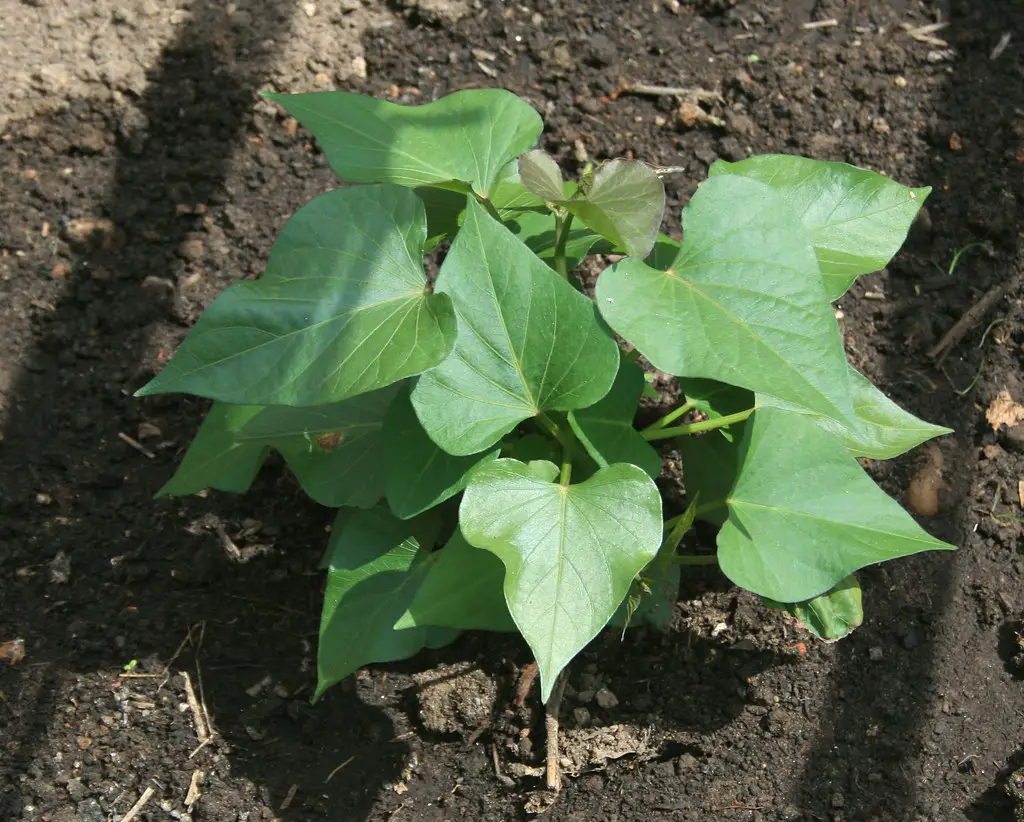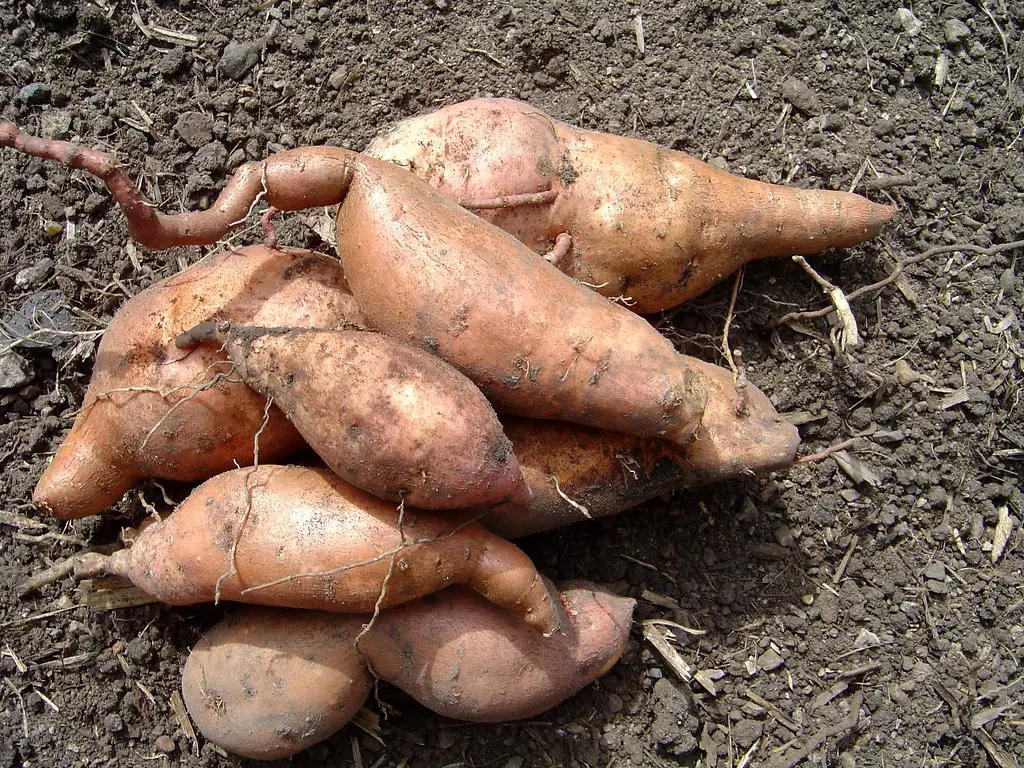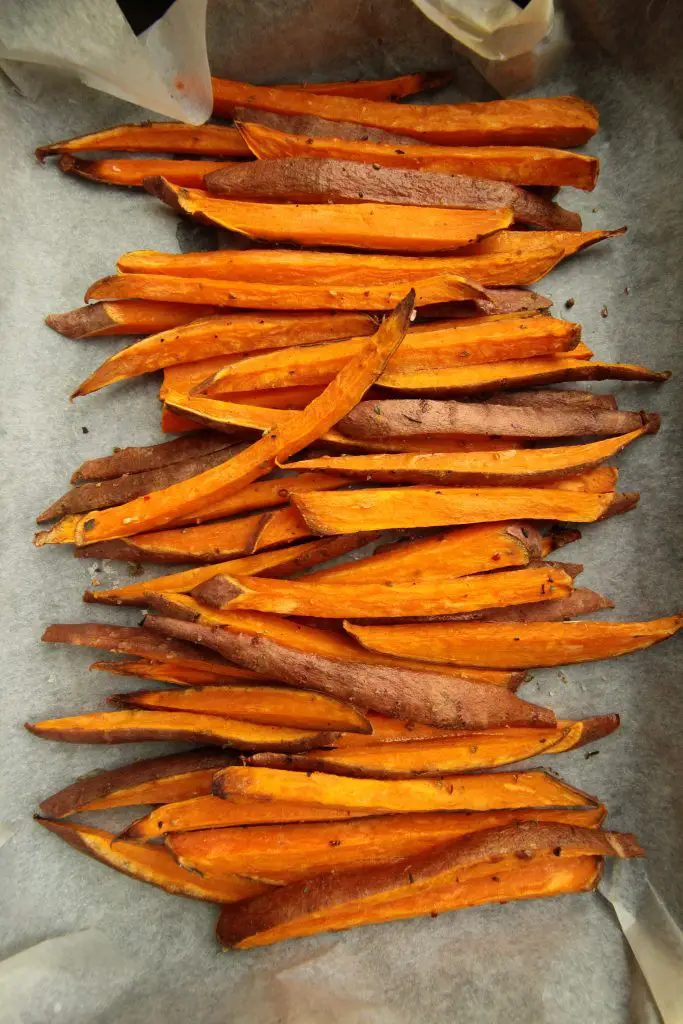Is Sweet Potato A Root Or Stem? Sweet Potato is a popular vegetable that is eaten widely and grows in tropical regions and temperate climates. The majority of varieties have moist, deep orange flesh with a range of different skin colors from purple to white. But have you ever wondered what part of the plant we really eating? Is it the root or the stem?
The section of the sweet potato plant we eat is a section of modified stem which grows underground and is called a tuber. The tuber is not a root as it stores food created by the plant material, and grows horizontally in soil. The tuber is able to store and transport nutrients to above-ground shoots and roots allowing them to develop and support additional growth.
Tubers unlike roots are capable of producing new plants and serve as one of the mechanisms used by the plant to reproduce. However, its key function is to store nutrients such as carbohydrates, and proteins for later use.
Whereas the roots’ primary function is to feed the plant by absorbing nutrients. To do this, Roots have a different structure that allows the plant to penetrate into the soil. There is a root cap on the tip of the root which protects the rest of the root which is softer.
The softer part of the root has a layer of tightly-packed cells called the “epidermis”. This layer is critical in helping the roots to absorb nutrients as it produces root hairs which are designed to increase the surface area of the root system. The increased surface area allows the plant to more rapidly absorb water and nutrients from the ground.

About Sweet Potato
The sweet potato is a plant that belongs to the Convolvulaceae family which is sometimes referred to as the bindweed or morning glory family. Despite its name, it is only distantly related to the potato.
Sweet potatoes originated in Central and South America though the plant became widely used by the people of Polynesia with archaeologists identifying the remains of sweet potato from around 1000 AD. It is suspected that the sweet potatoes were transported from South America by Polynesia mariners to the south pacific.
Its large, starchy tubers are most similar in flavor to pumpkin however, the young shoots and leaves of the plant are also used as green in some cuisines.
The plant itself is a herbaceous perennial vine that has heart-shaped leaves that come from stems that sprawl across the ground. The length of a stem can vary between 0.5 and 4 meters long, however, this varies depending upon the particular cultivar.

How To Grow Sweet Potato
Sweet potato is a frost-sensitive vegetable that prefers a temperature around 24 °C (75 °F). It does particularly well in environments where there is plenty of sunshine and warm nights. The plant requires a moist environment and is particularly sensitive to lack of moisture during the period where tubers are formed. This typically occurs around 50 to 60 days after planting.
The plant typically takes 4 to 6 months to mature though there are some early varieties that mature in as little as 2 months in the right conditions. Plants are started off using either stem or root cuttings. The shoots that appear from the tubers are generally referred to as “slips” and are the most common way that home gardeners grow the plants.
This can be done using tubers that have been purchased from the store. The process of starting the plants off is relatively simple and it can be done either with an entire tuber or a section of the tuber.
Place the tuber or a section of the tuber into a container where one end of the tuber is submerged in water. Leave the container in a sunny spot and over a period of several weeks. The tuber will begin to produce new roots and stems.
Once the plant has developed a reasonable root system it can be transplanted into the garden. When selecting a location to plant it should be in an area that gets at least 6 hours of sun a day.
In terms of soil conditions, sweet potatoes can be grown successfully in a wide range of soils however a light well-drained that has plenty of moisture is ideal. The pH of the soil should ideally be acidic with a pH range between 4.5 and 7.0.
Once the plant has been established in the ground there is little maintenance required as the vines of the plant shade out weeds. The only thing required is to water the plant regularly to ensure that you optimize the yield.

Harvesting And Storing Sweet Potatoes
Sweet potatoes are ready to harvest when the vines begin to turn yellow or just prior to the first frost in cooler climates. To avoid damaging the tubers find the location of the initial planting. Loosen the soil around this area with a fork being careful not to spear the tubers.
Once the soil is loosened gather the tubers from the ground using your hands. At this point, it may be necessary to remove some of the vines to make it easier to get to the tubers.
Once the Sweet potatoes have been harvested it is advisable to leave them in a warm well-ventilated area for around 10 days. The reason for this is that they are not very sweet when they first come out of the ground though they are still edible and are often used in sweetened pies or casseroles.
After this period of curing the tubers can be eaten or stored in a cool and dry location. In these conditions, the sweet potatoes will keep for up to 6 months.
Relevant Articles
What Is Ginger A Root Or Stem?
Are Potatoes A Root Vegetable?
Is An Onion A Root Or Stem? What Part Of The Plant Are We Eating?
Beets vs Beetroot: Are They The Same Thing?
